Laptop vs tablet: which should you buy?
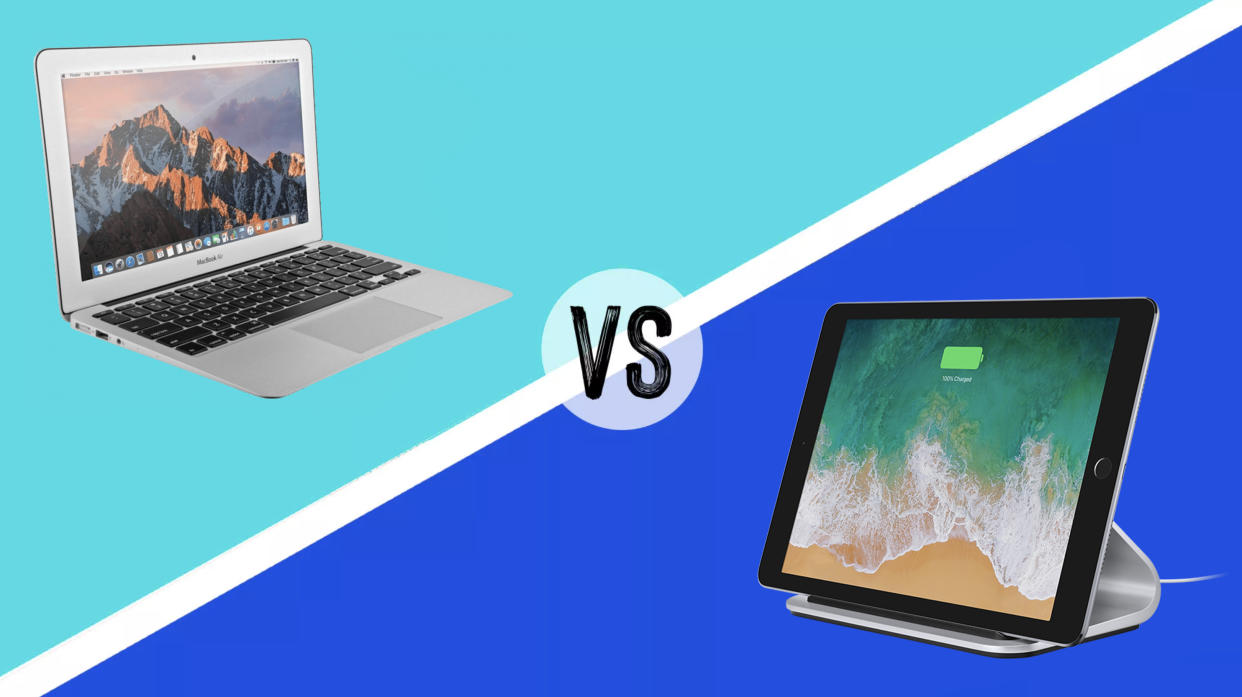
So, you're looking to buy a new workstation and can't decide between a laptop or a tablet? Given the range of products available right now and the leading next-gen technology these devices are equipped with, we can't say we blame you. Some of the best laptops for graphic design don't come cheap, and even the best tablets for video editing can fall short when running extensive software.
It's hard to find a laptop or tablet that isn't up to scratch, but if you have specific requirements and boxes to tick then this can help you narrow things down and make an informed choice on which type of device is better suited to your lifestyle, creative project, and most importantly – your budget.
For starters, if you only have around $100 / £100 to work with, then this likely won't be enough to bag yourself a decent laptop or tablet. However, there are of course ways to keep costs down, by shopping for refurbished Apple tech or by making the most of Samsung student discounts where possible.
Choosing between the best laptop and the top tablet has never been harder, but we're here to help. We've broken down this guide into sections to focus on individual qualities, while answering some common questions, and comparing some of the most popular devices.
Tablet advantages
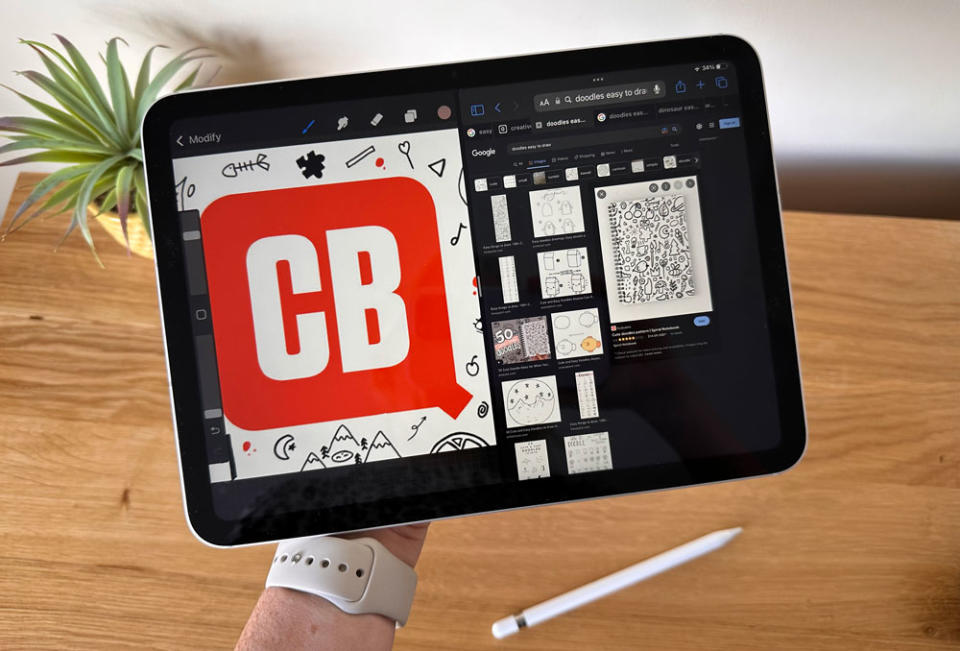
These days, higher-end tablets are surprisingly capable, featuring faster processors, premium displays, and the ability to run creative software such as Photoshop and Lightroom for photo editing, and Affinity Designer for iPad devices. The best drawing tablets have come a long way, and creatives are now faced with too much choice.
Why would you want to work on a tablet, rather than a laptop? The simple answer is portability. Tablets are generally lighter, less obtrusive, easier to hold, and much more convenient to work on than a laptop when you're on the go. In the unlikely event that you need to work standing up, whether that's in a crowded train carriage or moving from customer to customer in a store, you'll want a tablet.
Along with this lightness and portability, tablet touchscreens also make them the obvious choice for creating digital art using tablets with a stylus pen. Drawing on a tablet with a suitable stylus can feel close to the experience of using a pen on paper, whereas we imagine using a laptop screen would feel a bit weird. (That said, some of the best ASUS laptops have beautiful touch screens).
Tablets are also nicer to hold when you're reading or watching movies whilst lying in bed, or lounging on the sofa. Plus they generally come with rear cameras, like on smartphones. Laptops, in contrast, usually just have a front-facing webcam; fine for Zoom, but no good for photography or capturing video.
In regard to price and budget, tablets are usually the more affordable option. There are some cheaper tablets on the market with leading-edge tech, for example, read our Huawei Matepad 11 review. But this does come with caveats including no Google Play support, so it can feel like you're making some compromises.
Laptop advantages
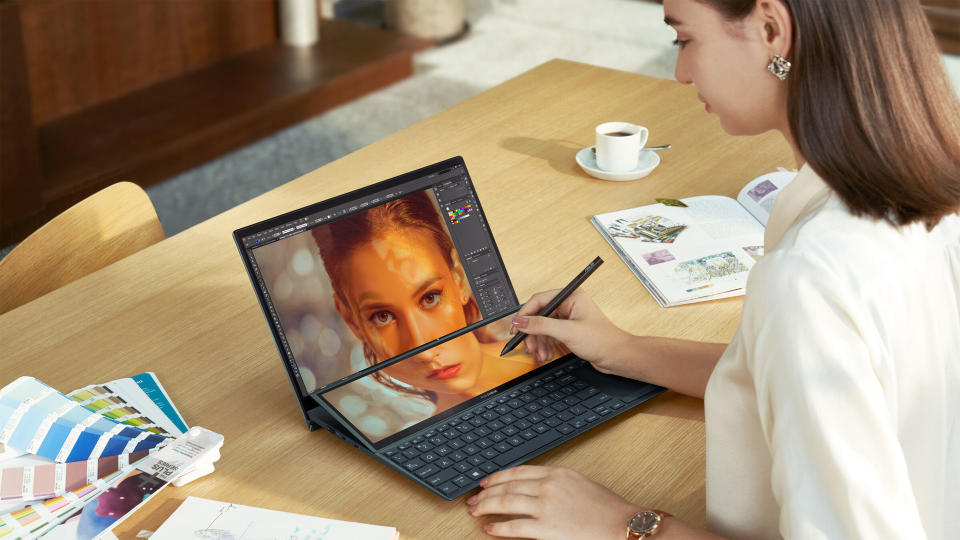
Laptops can be a better choice than tablets if you need to complete a lot of work-related tasks compared with using your device purely for entertainment. This is because laptops are designed to be more robust with an integrated keyboard and trackpad for enhanced productivity, and comfortable use for work and study.
For instance, if you spent a full day writing reports or essays, creating spreadsheets, or filling in forms, you'd likely find using a tablet's digital keyboard (or keyboard case) very slow and tiresome by comparison. The same applies to hardcore gaming: while you might be able to run World of Warcraft on an iPad, it's a much more enjoyable experience when you're using a proper gaming laptop with optimal hardware.
Although tablets are generally more portable, laptops are becoming increasingly thin and lightweight, making them easy to carry from place to place
Perhaps the biggest advantage of using a laptop over a tablet, though, is the operating system and processing power. Most laptops run either Windows, macOS or Linux. This allows them to run a far wider range of powerful software than tablets, which in general only allow you to run iOS or Android apps.
So, for example, some of Adobe's Creative Cloud software won't be able to run on tablets, and the few apps that do, such as Photoshop for iPad or Lightroom for iPad, probably won't be equipped with the full features of the Windows or Mac versions. Although tablets are generally the more portable choice, laptops are becoming increasingly thin and lightweight, making them easy to carry from place to place. Some of the best laptops for drawing also usually have more ports and connectivity options than tablets, allowing you to connect pretty much anything to your device.
With that said, the lines are beginning to blur a little in recent years. Some tablets are becoming quite powerful in terms of their hardware, meaning they can match the processing power of equivalently priced laptops. Also, you might not always want to run desktop software on a tablet. Procreate, for example, is high up in our best software for digital artists buying guide and is designed primarily for iPad. To further muddy the waters, we're also seeing the rise of 'hybrid laptops' (see our FAQs for details).
Design
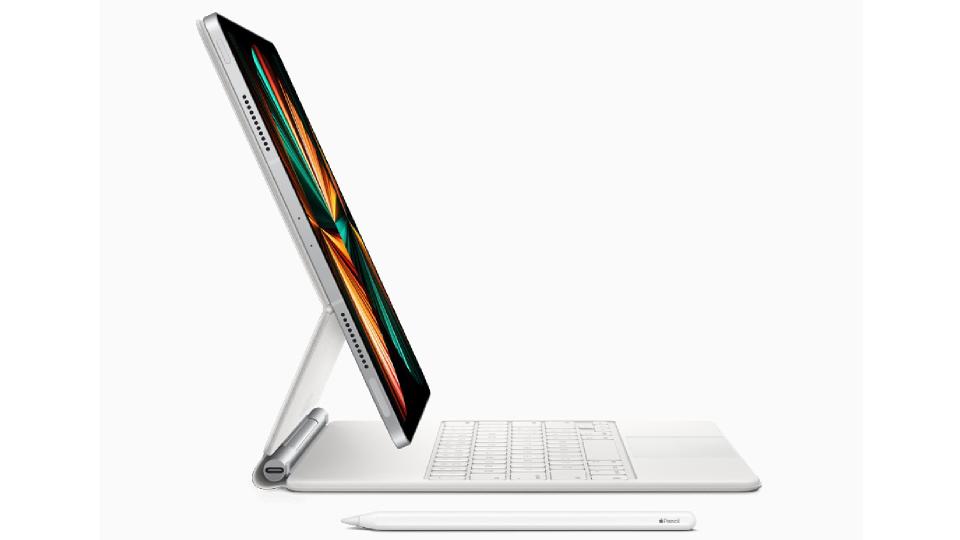
The design of your device and how it can complement your surrounding workspace can be essential to ensuring your ease of use and productivity. For example, we've found that iPads and tablets can be better for passing around and sharing in office and workplace environments, should you need to share some information with a colleague or if you need to find a template quickly to help out a waiting customer.
Some people prefer iPads over laptops because of their flexibility, yet still choose to use an external mouse and keyboard with them for the full desktop experience. If this sounds like you, see our picks of the best iPad accessories for the ideal setup. With a laptop, you're essentially glued to a desk, lap, or tabletop surface to support the weight of the device.
Both laptops and tablets are designed to fit their primary purpose, but can be adjusted through accessories to be more suitable for your personal needs and requirements. Many creatives have opted for alternatives to sit-down working like using a standing desk or under-desk treadmill to keep their legs moving while using a laptop. You wouldn't necessarily need this with a tablet since it can be held and used with one hand, while supported by an iPad stand.
Cameras
There's also the cameras to think about when deciding between laptops vs tablets, given that laptops usually only have the one front-facing camera built-in for webcam purposes, whereas tablets and iPads can have both front-and-rear cameras equipped should you want the option of using your tablet to capture images.
The iPad Pro, for example, has a 12MP front-facing camera, with features like Center Stage built in to keep you in the centre of the frame. It also has a dual-camera rear setup featuring 12MP wide and 10MP ultra-wide sensors, with LiDAR allowing for faster focus and better image processing with the M2 chip.
This makes an iPad more adaptable and useful for how we use cameras on our tech these days, in comparison to a laptop. Although I do like that most modern laptops now have privacy shutters built-in over the cameras, just for that extra piece of mind that you haven't accidentally left your webcam on by accident.
Connectivity
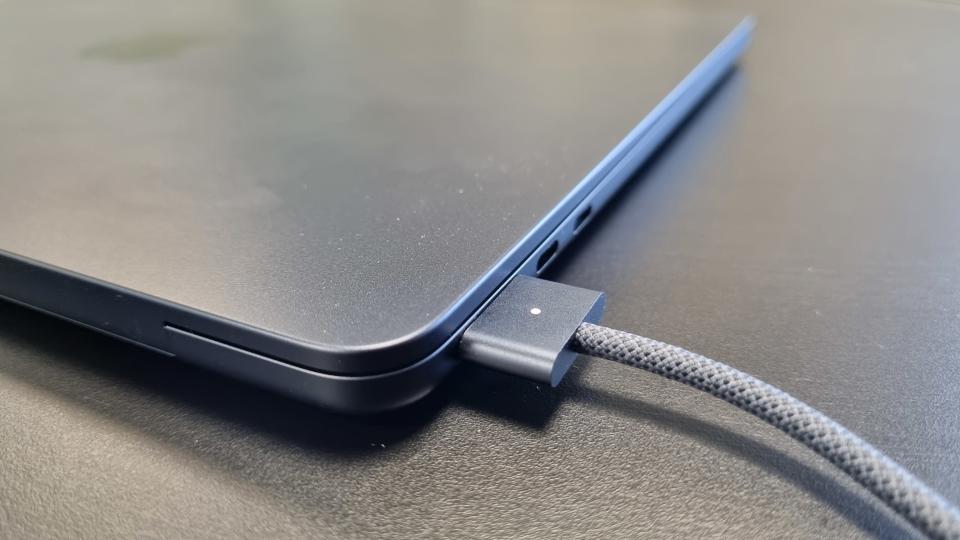
Connectivity is a very important thing to consider when deciding on a laptop or tablet. In my experience as a photographer, most of the time tablets do not have a reliable SD card slot for importing my photos, and even when using an adapter I would still run into connectivity issues, or not enough internal storage for transferring images across.
I also like to listen to music while I edit photos, so usually require a 3.5mm headphone jack on my devices, since my Bluetooth headphones are for the gym only. While it's easy to just use Bluetooth with everything, having a dedicated port on your tablet or laptop can make it so much quicker to get connected.
With the latest MacBook Air, Apple has brought back MagSafe charging, so you can connect your laptop to a wall socket and if you trip over the cable, it will pop out neatly and safely. As well as that, you get two Thunderbolt ports and a 3.5mm headphone jack. The situation with the iPad Pro is more limited, though. You get one USB-C or Thunderbolt port. Note, though, that using the Apple Magic Keyboard with the iPad does mean you get an extra charging port.
Screen
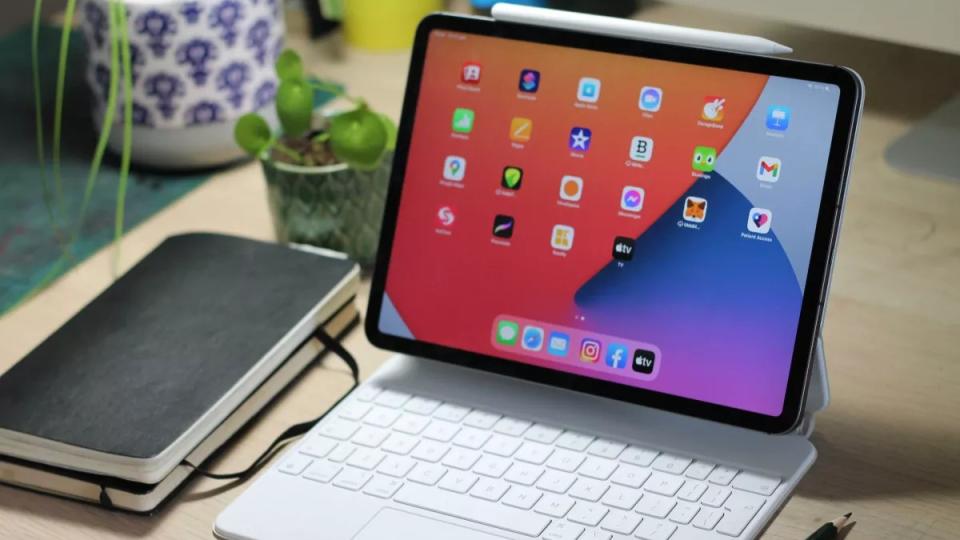
Tablets are known for being all-screen, so its important if you choose to opt for a tablet over a laptop that the screen is impeccable or at least high-res enough to meet the requirements of your creative project, or even just for streaming movies and TV. What's the point in buying a tablet if it doesn't have a gorgeous screen?
Some laptops have gotten so advanced that they have multiple screens tucked away and folded into secret crevices. For example, the ASUS Zenbook Pro 14 Duo model is an excellent choice for creatives with a beautiful OLED main display with Pantone-validated colour accuracy, and another tilting next-generation ScreenPad too.
With that said, if multiple screens is a must for you, then there are ways of connecting tablets to external monitors. Either by using screen cast to mirror the display or with specific HDMI cables.
Price
The price differences between tablets and laptops used to be clear-cut, but now the lines are beginning to blur a little. Tablets have gotten more expensive, and more feature-rich too, while laptops keep advancing at the usual rate but with mostly steady prices around the $1,000 / £1,000 range for new mid-range releases.
For example, the MacBook Air (M2, 2022) started at a price of $1,199 / £1,249 when it was first released, for entry-level configurations. Compare this with the iPad Pro (M1) 12.9-inch which debuted at a not-far-off entry price of $1,099 / £999. Both of these devices can be closely compared in terms of features and performance.
This makes is harder than ever to decide between a laptop or tablet solely based on budget and price as a contributing factor. It also depends on which manufacturers you're interested in, as you can get some competitively priced tablets from brands like Lenovo, Samsung, Microsoft and Huawei.
Another option might be to opt for one of the best Chromebooks, since some of these laptops are excellent tools for creatives and can give a decent Windows laptop or budget Mac a run for its money. Cheaper tablets usually take the form of Amazon Fire devices, suitable for light tasks such as surfing the web and using Amazon apps (though not iOS or Android apps), reading books and streaming TV and movies.
Verdict
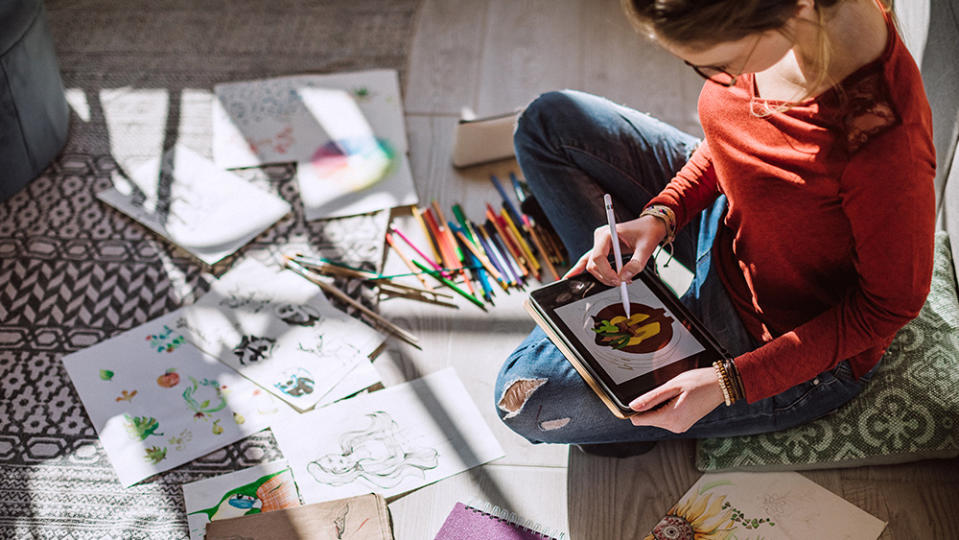
If you want to do a lot of creative work using heavy-going software, then a mid-range laptop like the MacBook Air is a great choice (you can see it and more in our best MacBook buying guide). As a laptop, it's going to provide a more comfortable and functional typing experience overall, compared with a tablet.
Depending on the software that your laptop can run, chances are that it's going to support a far larger range of software than a typical tablet. You can also connect more devices to a laptop, more easily, without the need for adapters. There's also storage capacity to think about, and while you might be able to use an external hard drive with your tablet, it's usually much more secure to use a hard drive with a laptop that can make use of recovery software should anything happen to your data.
If you're mainly interested in the more basic of computing tasks, like checking your emails and browsing the web, then a tablet might be a better bet. In our experience, tablets can be far more portable, with higher resolution screens, and incredible brightness when streaming content with a buttery-smooth refresh rate. The portability also makes a tablet a great choice if you plan to use the cameras a lot, on both the front and rear of the device, given that a laptop camera is really only suitable as a webcam and not much else.
Check out our guide to laptops vs desktops if you need some more buying advice on which format is best.
FAQs
What is a hybrid laptop?
A hybrid laptop, aka 2-in-1 laptop, is a tablet that combines with a detachable keyboard to create a laptop-like experience. Popular examples include the Dell XPS 13 2-in-1, the HP Spectre x360 and Microsoft's Surface Studio.
Because you can attach and detach the keyboard at will, these devices offer the best of both worlds. You can use your tablet as a tablet when that's more convenient (for example, when you want to draw on it), or as a laptop when that's preferable (such as typing up a report).
On the downside, hybrid laptops are generally quite expensive. And in my experience, these tablet-keyboard combinations can be a little wobbly, so I wouldn't generally recommend them as your main work computer. Still, if you want to find out more, read our buying guide to the best 2-in-1 laptops available now.

